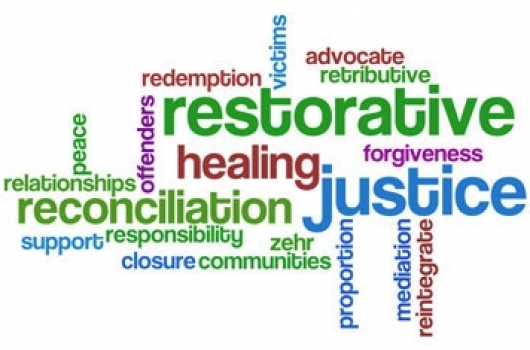Restorative Justice: Unlearning How to Be a Criminal

I have been trained to be a restorative justice facilitator for a pilot program in my hometown of Louisville, Kentucky. Several years ago, several lawyers, ministers and others in the community got together to explore ways to try to keep so many of our juveniles out of the juvenile court system. The local school board had a zero tolerance policy which led to every in-school dispute becoming a court case. Not only that, there were a disproportionate number of young people of color ending up in our juvenile detention facility. Once there, they were stigmatized and soon they became jaded. They were learning how to be criminals. It was all leading to too many young people ending up in prison. We were witnessing what had become known as the “school to prison pipeline.” The local Bar Association brought in a series of speakers from across the country and globe to introduce us to the idea of restorative justice. It’s an alternative to the retributive justice system so many of our young people were encountering. Here’s how it works.
Restorative Justice Louisville
Certain cases in which juveniles are involved are referred to Restorative Justice Louisville, the non-profit which was formed to oversee the pilot program. Once referred, the two trained, volunteer facilitators were assigned to the case. Their job was to contact the victim to see if he or she would be willing to participate in a restorative justice conference in which the perpetrator of the crime would be present. If the victim agreed to participate, the juvenile offender would also be asked to participate but only could participate if he or she admitted to committing the offense. Once the parties agreed, the facilitators would convene a conference which would include the victim (and support people), the offender (and support people) and members of the community (often law enforcement officers were involved). The conference had several purposes: (1) to give the victim a voice in the process (2) to allow the offender to apologize and take responsibility for the offense and (3) to develop a reasonable resolution that sought to heal the harm caused by the offense.
Justice Rooted in Tribal Circles
While it may sound rather complicated, it is quite a simple process. It has its roots in tribal circles that go back centuries in time. In our very complicated world, this system of bringing people together, holding the offender accountable, giving the victim an opportunity to participate and engaging the community in problem solving, works. There are many, many success stories that are heart-warming and heart-rending. Read more about it on the Restorative Justice website.
If you would like to learn more about the restorative justice movement, the theme of the 2014 Kentucky Council of Churches annual conference is Restorative Justice. The 67th Annual Assembly is on October 24 – 25, 2014, at Lakeside Presbyterian Church in Lakeside Park, Kentucky, near Cincinnati. Among the keynote speakers are The Rev. Dr. Carl Stauffer, Co-Director of the Zehr Institute for Restorative Justice at Eastern Mennonite University, Ms. Nontombi Naomi Tutu, daughter of Bishop Desmond Tutu, who has participated in truth and reconciliation conferences, and Sister Helen Prejean, a spiritual advisor to death row inmates and the author of Dead Man Walking and The Death of the Innocents. For more information, go to the Kentucky Council of Churches website.
If you can’t make it to the assembly, pick up The Little Book of Restorative Justice by Howard Zehr (2002). The book is available onlineand is a good place to begin important discussions. The restorative justice movement is growing as a response to a broken criminal justice system. If your community is involved in some way, you are invited to contact me and we can begin to share with the wider church these important ministries.